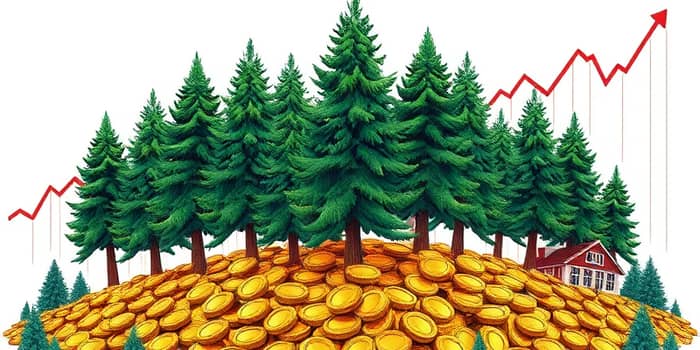
In an era defined by rapid market shifts and short-term thinking, a growing number of investors are rediscovering the power of buy-and-hold strategies. Known colloquially as ‘forever’ assets, these investments are chosen for their resilience, their potential to compound value over time, and their relative immunity to the noise of daily price movements. As both retail participants and institutions rethink their approaches, the concept of holding certain core positions indefinitely is moving from niche to mainstream.
Instead of chasing the next hot sector or trying to time every market swing, proponents of this philosophy advocate a disciplined, low-intervention approach. The appeal lies in the combination of long-term compounding and steady growth while avoiding the pitfalls of frequent trading. This article will explore why investors are increasingly incorporating ‘forever’ assets into diversified portfolios, the key categories of these holdings, and practical steps to build a lasting portfolio tailored to your goals.
‘Forever’ assets refer to high-quality investments that investors intend to hold for decades or, in some cases, permanently. They are selected for their capacity to weather economic cycles, deliver consistent returns, and often provide income through dividends or yield-oriented distributions. This philosophy sharply contrasts with a focus on market timing and rapid portfolio turnover.
Key traits of ‘forever’ assets include sustainable competitive advantages, healthy balance sheets, and proven management teams. Whether represented by equities, real assets, or alternative structures, these holdings share a common purpose: to serve as the foundation of a portfolio that can evolve with an investor’s lifetime without constant adjustments.
The shift toward long-duration holdings has accelerated for several reasons. Investors face unprecedented volatility and a flood of conflicting market signals, making passive decision-making tempting. By focusing on core positions that can be held indefinitely, individuals and institutions alike gain clarity and reduce the emotional burden of reactive trading.
A thoughtfully constructed ‘forever’ portfolio balances multiple asset categories. Below is a comparison of key types and their defining characteristics. While individual needs vary, this framework can guide asset selection and allocation decisions.
Institutions often increase alternative exposure to 15–40%, while individual investors typically allocate less than 5% due to liquidity constraints. However, exchange-traded products have democratized access to many of these strategies.
Constructing a personal ‘forever’ portfolio begins with choosing broad, low-cost building blocks. The goal is to achieve a balance between growth, income, and stability without micromanaging every position.
Over time, rebalance only to maintain target allocations, resisting the urge to chase short-term performance. This approach requires trust in your initial thesis and faith in the power of compound growth.
While ‘forever’ assets promise reduced trading costs and stress, they are not without challenges. During pure growth rallies, high-beta or emerging tech stocks may outperform more conservative sectors. Investors must accept potential relative underperformance in chase markets.
Alternative assets such as private equity and infrastructure can exhibit lower liquidity, requiring a longer lock-up. Dividend payers may cut distributions in extreme downturns, and no portfolio is immune to systemic events like the 2008 financial crisis or pandemic-driven shocks.
Yet, the psychological merits of this strategy are profound. By focusing on fundamental quality and long horizons, investors can sidestep common behavioral errors such as panic selling at market bottoms or overtrading in volatile conditions. This discipline has been lauded by legends like Warren Buffett, who prized forever holdings in solid businesses.
As market complexities multiply and short-term volatility persists, ‘forever’ assets offer a coherent path forward. They embody the virtues of patience, diversification, and disciplined allocation, empowering investors to build wealth sustainably.
Whether you are an individual mapping out your retirement journey or a high-net-worth allocator seeking institutional-grade resilience, adopting a lifetime horizon can transform how you perceive risk and opportunity. By anchoring your portfolio in robust, enduring assets, you pave the way for decades of uninterrupted compounding and financial peace of mind.
Embrace the enduring power of ‘forever’ assets today, and let time become your greatest ally in the pursuit of generational prosperity.
References













